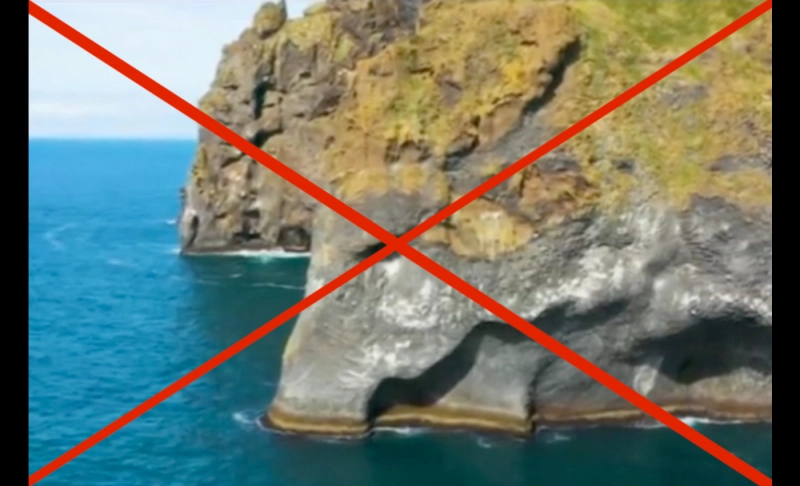By: Sam Doak
December 12 2022

There is no evidence to support the existence of such beings.
Context
Videos on social media are spreading the claim that geological features around the world are the remains of giant humans and animals. Most popular on TikTok, videos of this nature frequently present features like mountains and cliff faces that resemble living creatures, and state that the accepted geological explanation for them is false.
Claims of this nature are often closely associated with historical revisionist conspiracy theories, such as those relating to the "mud flood" and the supposedly lost civilization of Tartaria. What links them is the belief that mainstream history and science perpetuate lies that cover up a fantastical past.
In Fact
There is no evidence that giant animals and humans existed and that their fossilized remains have been mistaken by science for mountain ranges and other large geological features. In all instances of these claims, the features they present have well-documented natural explanations.
For example, Elephant Rock, a formation in Iceland, is frequently held up as an example of a giant fossil due to its close resemblance to an animal. In reality, the origin of this rock feature is well known, as geologists have determined that it formed from volcanic rock and natural elements subsequently eroded it into its current shape.
It should be noted that if giant humans and animals had existed, there would be verifiable scientific and archaeological evidence for their presence on earth; to date, no such material has been found. It is extremely unlikely that giant humans could exist, even in a hypothetical sense, given the immense physical strength that would be required to support bodies of this size.
While it may be easy to dismiss content relating to humans the size of mountains or elephants frozen into giant rock formations, the ubiquity of such claims points to an interesting quirk in human psychology, termed "pareidolia." People with this trait tend to ascribe meaning to random stimuli. A common example of this is when viewers see animals in cloud formations.
Pareidolia has been cited as a cause for numerous curiosities that have gained traction in popular culture. Perhaps the most prominent example of this is the "face on Mars," photographed by the spacecraft Viking 1. This image led many to believe that a civilization had built a megastructure on Mars' surface, but it was later revealed to be the product of natural formations and shadow.
The Verdict
There is no evidence that giant humans and animals have been petrified into rock formations. No verifiable archeological evidence has surfaced to support the existence of such beings and the features cited have alternate, scientifically supported explanations. Human beings have a natural tendency to recognize familiar patterns in random occurrences, which may be a contributing factor to claims of this nature. This claim has therefore been marked as false.